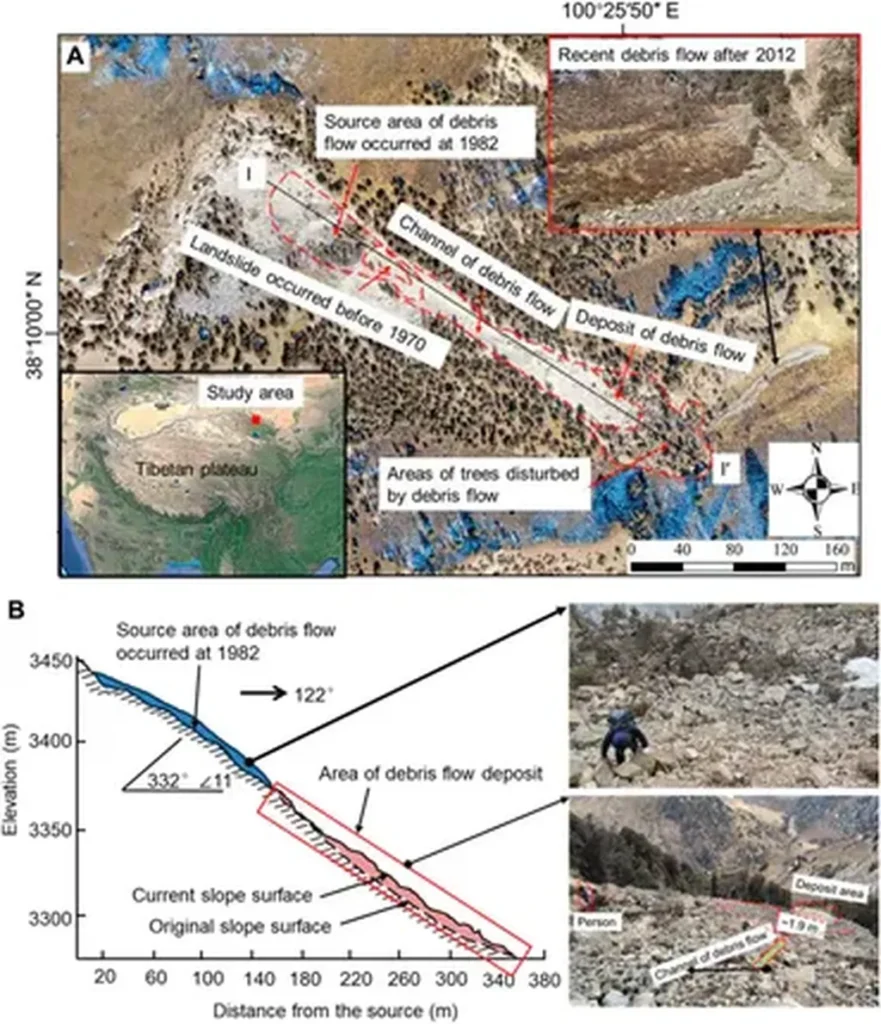In the heart of China’s mountainous terrain, a groundbreaking study is reshaping how we understand and predict debris-flow risks, with significant implications for the energy sector and infrastructure development. Led by Dr. Z. Gu from the Institute of Geomechanics at the Chinese Academy of Geological Sciences in Beijing, this research introduces a novel framework that could revolutionize hazard assessment in large river basins.
The Jinsha River Basin, a critical region for hydropower and infrastructure, has long posed challenges due to its susceptibility to debris flows. Traditional methods often rely on oversimplified topographic metrics, failing to capture the complex interactions between channel gradient, discharge, and sediment supply. Dr. Gu’s team addressed this gap by developing a process-based indicator system that integrates key geomorphic parameters into a Naïve Bayes probabilistic classification model.
“This approach allows us to accommodate both continuous and discrete variables, enabling a more accurate probabilistic estimation of debris-flow occurrence,” explains Dr. Gu. The model considers factors such as stream power, extreme rainfall events, surface erodibility, and sediment connectivity, providing a more comprehensive understanding of the landscape’s dynamic behavior.
The results are promising. The model achieved a prediction accuracy of 63% across the Jinsha River Basin and demonstrated a high degree of spatial agreement with the observed disaster footprints of the “8.21” Jinyang debris-flow event in 2023. Feature importance analysis revealed that surface erodibility is the dominant contributor to susceptibility, followed by connectivity, stream power, and extreme precipitation.
For the energy sector, particularly hydropower development, this research offers invaluable insights. The identification of high-risk gullies and the understanding of their distribution can inform risk-informed planning and mitigation strategies. “Approximately 32,000 high-risk gullies, each over 200 meters in length, exhibit a power-law distribution, clustering within a 30-kilometer buffer on both sides of the main stem of the Jinsha and Yalong Rivers in their middle and lower reaches,” notes Dr. Gu. These regions are strongly associated with infrequent but high-probability events that can drive large-scale debris-flow disasters.
As climate change intensifies and infrastructure expands in alpine canyon regions, the dynamic datasets constructed in this study provide a quantitative basis for better decision-making. The modeling approach represents a scalable and physically grounded paradigm for debris-flow hazard assessment, offering broad applicability to other high-relief mountainous environments worldwide.
Published in the journal “Natural Hazards and Earth System Sciences” (translated from Chinese as “自然灾害与地球系统科学”), this research marks a significant step forward in the field. It not only enhances our understanding of debris-flow dynamics but also provides practical tools for mitigating risks in critical regions. As Dr. Gu and his team continue to refine their model, the energy sector and other stakeholders can look forward to more robust and reliable methods for assessing and managing debris-flow hazards.
In an era of rapid environmental change, this research underscores the importance of integrating advanced technologies and scientific methodologies to safeguard infrastructure and communities. The insights gained from this study will undoubtedly shape future developments in hazard assessment, ensuring a safer and more sustainable future for all.

